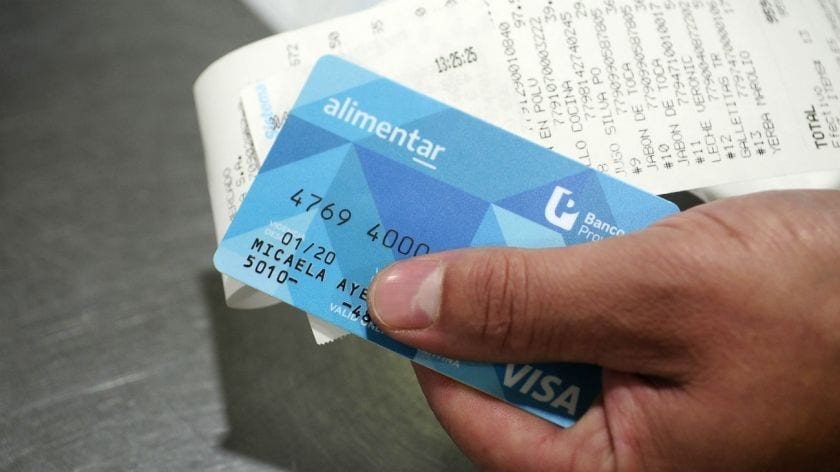Have you noticed how much attention do you pay to your food? Sharing your meals on social media, discussing what you had today or plan to order for a Friday dinner? A pretty much par for us is a real luxury for 80% of the world’s population. And this year’s challenges do nothing but obstruct access to it.
In Latin America, where the cost of a nutritious diet exceeds the global average, hunger issues top the regional agenda. According to the United Nations World Food Program (WFP), more than 16 million people here would be exposed to extreme hunger and other 48 million would become food insecure by the end of the year. It turns out that more than 10% of Latin American people will face health risks due to nutrient deficiencies. How do governments react and what’s the role of multilateral financial institutions in addressing food security challenges?

Latin America enriched the world not only with such basic ingredients as potatoes, tomatoes, corn, beans and peanuts, but also made gastronomy brighter thanks to cocoa, avocado, chilli peppers, vanilla and dozens of superfoods, so essential for the smoothies of modern biohackers.
Nevertheless, we are more than 500 years away from colonization times, and today’s Latin America deals with malnutrition and financial inaccessibility of balanced and nutritious diets. From 2000 to 2014, the number of hungry people almost halved, declining from 74 million to 38 million, but within the last six years numbers have worsened again: by the end of 2020, the number of undernourished is estimated to surpass 60 million people.
In a region where even key economies stagnated in recent years, the financial crisis provoked by the pandemic could trigger a multi-year recession and escalation of internal political and social conflicts, complemented by even greater inequality. According to ECLAC experts, the share of the population below poverty would reach 35% by the end of 2020 and at least a third of them will face food shortages. Under such conditions, governments are forced to respond swiftly and revise their programs and funding flows.
Finding themselves unprepared for the Covid-19 pandemic and its economic consequences, the Latin American countries are in a dead-end and forced to enter into new debt commitments with international creditors. So, multilateral financial institutions, specialized funds and banks headquartered outside the region are those to seize the moment. Considering that a return of national economies to pre-crisis indicators would take from five to seven years (and that’s quite a positive view), countries are accepting the postponed need to refinance their loans and further reduction of financial autonomy.
Bolivia and Argentina have already switched to fast track measures to combat hunger with credit money. Meanwhile, in Chile, the government is trying to get the most out of its resources and is evaluating alternative options.
The interim government of Jeanine Añez in Bolivia has already agreed on loan terms with the International Bank for Reconstruction and Development (IBRD) and the Inter-American Development Bank (IADB). Financial institutions approved new credit facilities amounting $200 million and $450 million, respectively. Funds would be used as helicopter money distributed among unemployed and socially vulnerable adult Bolivian citizens. Bonos contra el hambre (anti-hunger vouchers) are lump payments of 1,000 bolivianos (~$140) and are supposed to partially cover food expenditures. Their value is almost half the minimum wage in Bolivia (2,122 bolivianos or ~$300). Additionally, in April, unemployed Bolivians have already received 500 bolivianos (~$70) as a one-time support measure.

In its turn, Argentina, supported by a $300 million loan from the Andean Development Corporation (CAF), augmented circulation of ‘ration cards’ (tarjetas alimentarias) that comply with national food security objectives. Just after coming to power in 2019, President Alberto Fernandez announced the Plan Argentina Contra el Hambre, a national plan to fight hunger that acquired additional importance in times of Covid-19 socio-economic crisis. Food cards with 4,000 pesos (~$50 or 6,000 pesos (~$80) were part of the national plan since its publication and are more than topical these days. They are ‘reloaded’ monthly can only be used for grocery shopping. Additionally, backed up by an IADB loan, the country’s government plans to make ‘food cards’ digital and consolidate supply chains from agricultural producers to consumers, providing support to small agricultural enterprises. The targets and conditions of the $1,7 billion credit facility were renegotiated this January and since then almost one billion dollars has already been reoriented.

In Chile, where almost 11% of the 18,7 million population are dealing with extreme hunger and national GDP could decrease by up to 25% by the end of 2020, the situation is close to the emergency. National unrest and protests break out around the country as a reaction to “inefficient and insufficient measures” proposed by the government. So far, low-income citizens are receiving 3-month support of 65,000 pesos (~$80), whereas authorities are hastily deliberating on solutions to address the food crisis and reduce social tensions. A measure proposed this May by the president Sebastian Piñera was the distribution of 2,5 million food baskets to most vulnerable groups of the population. It was supposed that this support would cover about 70% of households in shortage of sources of livelihood. However, less than 30% of starving families received food packages that were enough for some 10 days. In this context, Chilean opposition proposed to introduce an additional temporary property tax of 2,5% on assets with an aggregate value of over $22 million. Funds received from the wealthiest citizens are supposed to be redistributed in favour of the poor. According to parliamentarians’ calculations, this ‘fund’ would amount to $6 billion and could provide low-income households with $500 payments for some six months. Nevertheless, the project has been subjected to parliamentary battles since May and seems far to be adopted.

Still, circumstances have upgraded Chilean mutual support that originated in the days of Augusto Pinochet (led the country from 1973 to 1990). Community kitchens (ollas comunes), restaurants and cafes have joined the fight against hunger united by Food for All charity project. 78 companies (including gastronomic rating top-listers) have joined the program in the cities of Santiago de Chile, Antofagasta, Valparaiso and Viña del Mar since mid-May.
Income inequality and a massive gap between rich and poor have historically been some of the most serious challenges for the Latin American region. In such conditions, the solution proposed by the Chilean opposition (despite its populism) could ease social tensions and absorb conflicts. And given the regionalism of Latin American politics, this approach has opportunities to spread around the region. Wise and controlled redistribution of wealth could become an argument in political debate, smooth the failures of national food security systems and slow down the spiral of foreign debt dependence.

